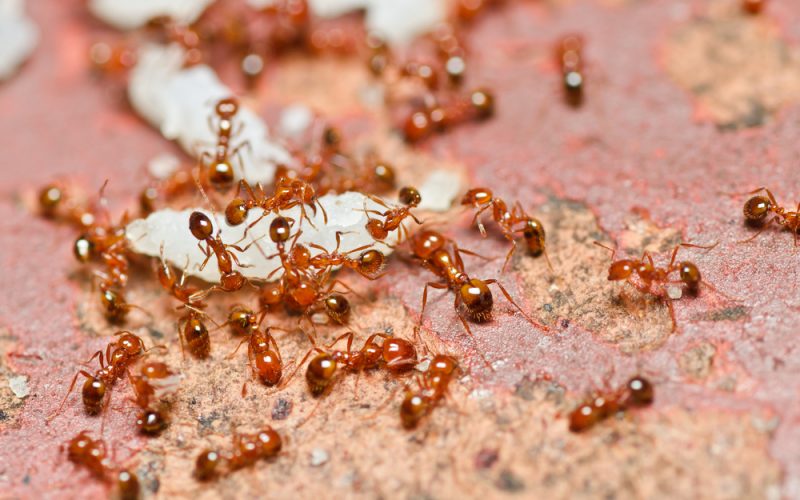Ants have been an inspiration to humans because of their hardworking nature, social collaboration, and their ability to solve complex problems. They are in many ways quite noble, sacrificing themselves for the good of their communities (although not unlike the myth of lemmings going over a cliff). Our relationship with ants is a mix of annoyance and admiration, and it’s easy to see why.
They are incredibly strong for their size, capable of lifting twenty to fifty times their own body weight! Like human civilizations, they “farm” by protecting their food plants from herbivores, growing edible fungus in gardens by secreting antibiotic mold inhibitors, and using manure as fertilizer. Some species enslave other ants to do their labor for them. And some herd other kinds of insects and raise their young much like we do for livestock. Yet they are the number one house pest, and in the case of the pharaoh ant, can invade hospitals and office buildings to nest between two pieces of paper. Admirably annoying, indeed! There are at least 700 species of ants in the U.S.A., with more than 12,500 species classified worldwide.
The red imported fire ant, as its name implies, is not meant to be a staple of Arkansas like rice and rednecks. It’s native to South America. Their painful sting contains venom that kills cells and forms white pustules on the skin. They are extremely adaptable: during a flood, the colony forms a mass of ant bodies with the queen in the center, and rafts to the nearest tall object to wait for the waters to recede. Considered an invasive species, fire ants do prey on garden pests but attack pollinators and ground nesting birds, too. The FDA estimates that fire ant affected areas spend five billion a year on things like medical treatment and damage control, with about 750 million spent on agricultural losses. Thus far, pesticide controls have not eliminated fire ant colonies, but have caused local ecological damage. In Australia, birth control is actually used to render the queen ant infertile. Pouring boiling water into the ant nest may be effective, too.
Are ants invading your house? Remove any indoor potted plants that contain ant nests. Seal cracks in your exterior walls, and fix the leaks – ants are attracted to moisture. Keep the kitchen clean and frequently wipe the countertops and floors to remove any crumbs and the scent of food or pet food. (Ants follow pheromone trails, so wiping surfaces can slow their progress.) There are natural strategies to repel ants, too: try using cinnamon, peppermint, black or cayenne pepper, clove, citrus oils, or drawing a chalk line to form a magical protective circle which ants may not cross. One popular, safe method is to mix borax (not the same as boric acid) with powdered sugar, place it into a shallow can or plastic container with holes in the lid. The ants carry the borax-laced sugar back to their colony, where it kills all of them. Or not. One can never tell what will work absolutely against the tenacious ant.
Amanda Bancroft is a Master Naturalist and volunteers with her husband Ryan for their solar-powered online educational center on how to make a difference with everyday choices at: www.RipplesBlog.org.











